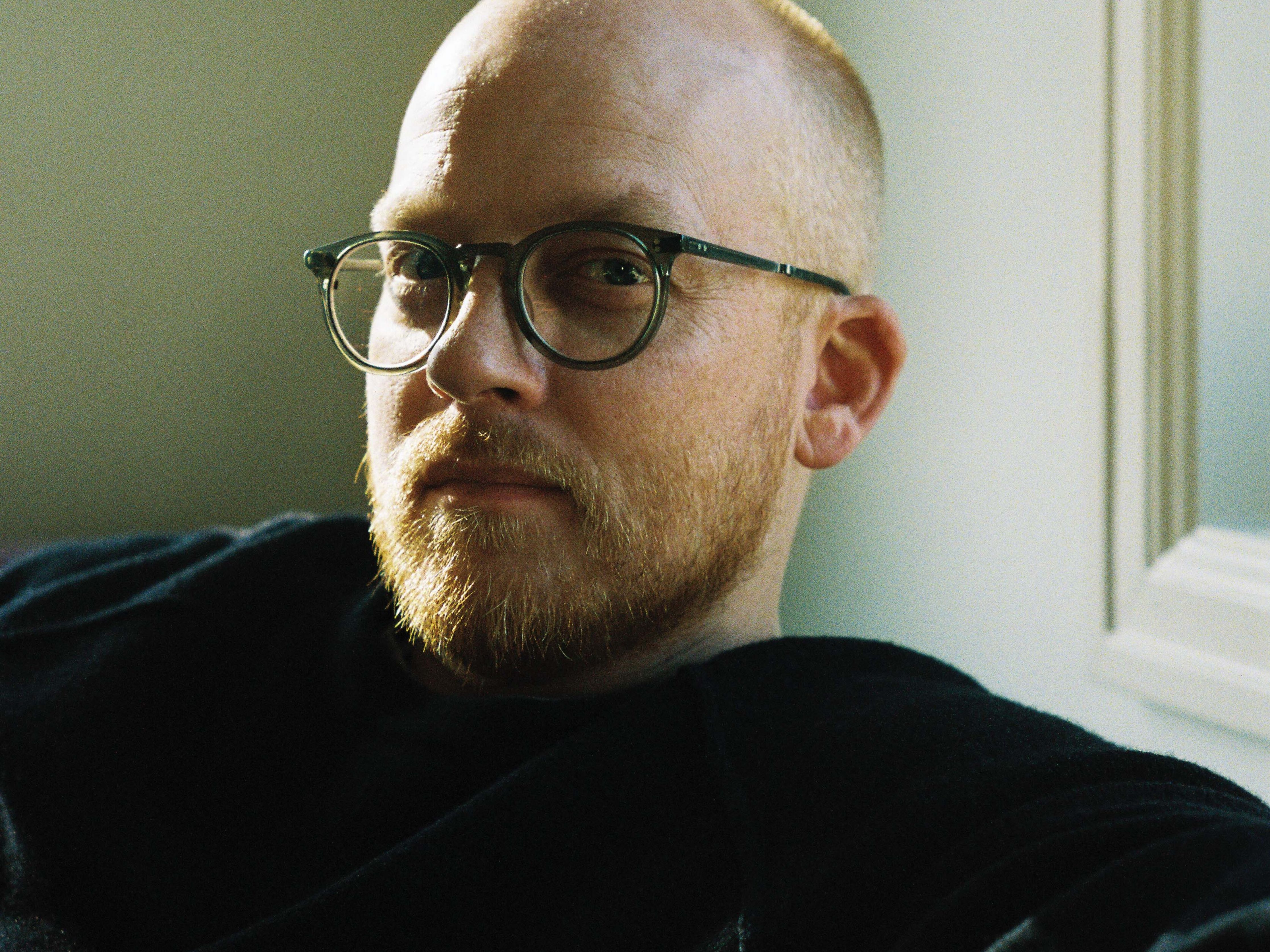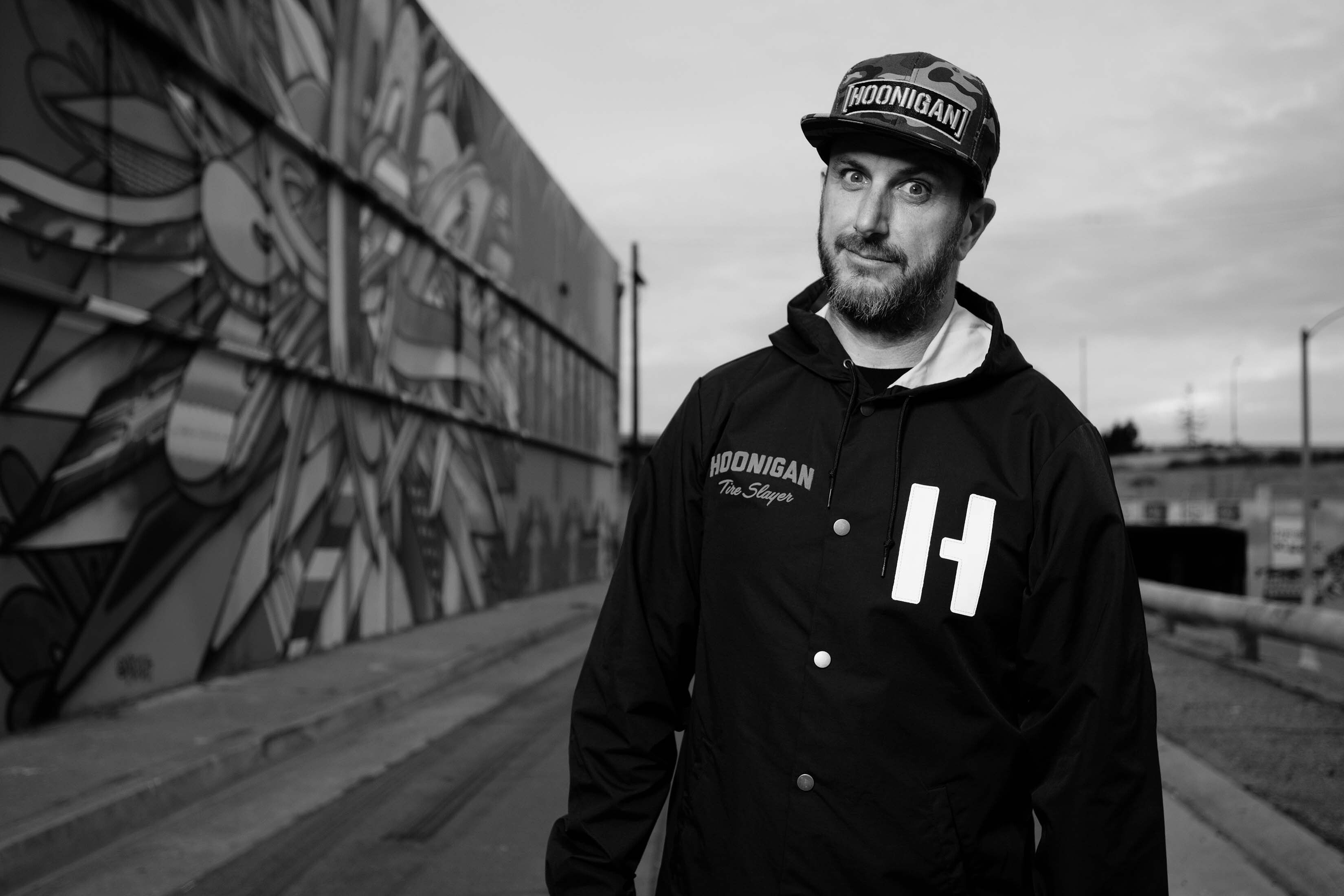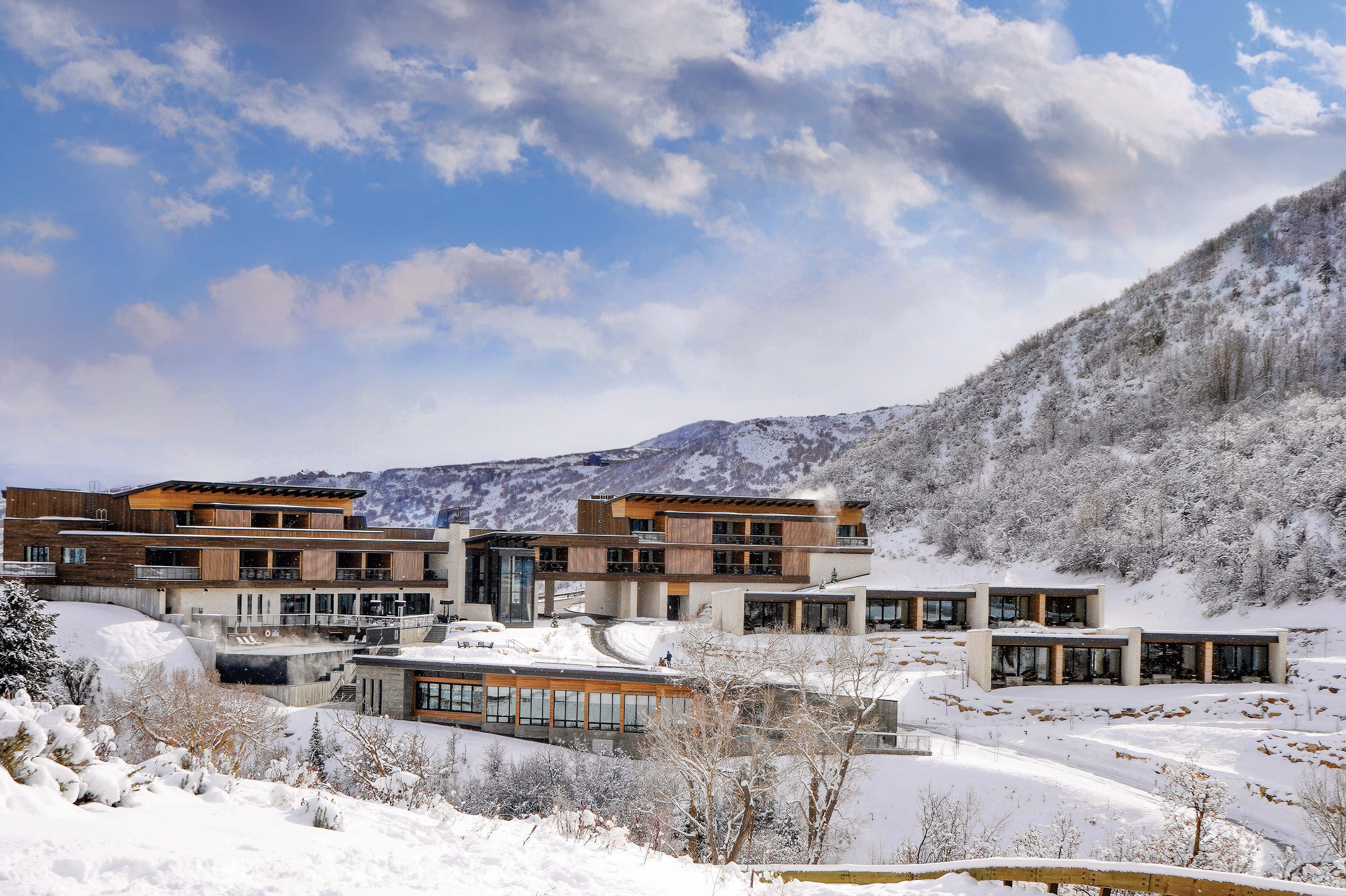You Need to Visit These Incredible Land Art Pieces in Utah
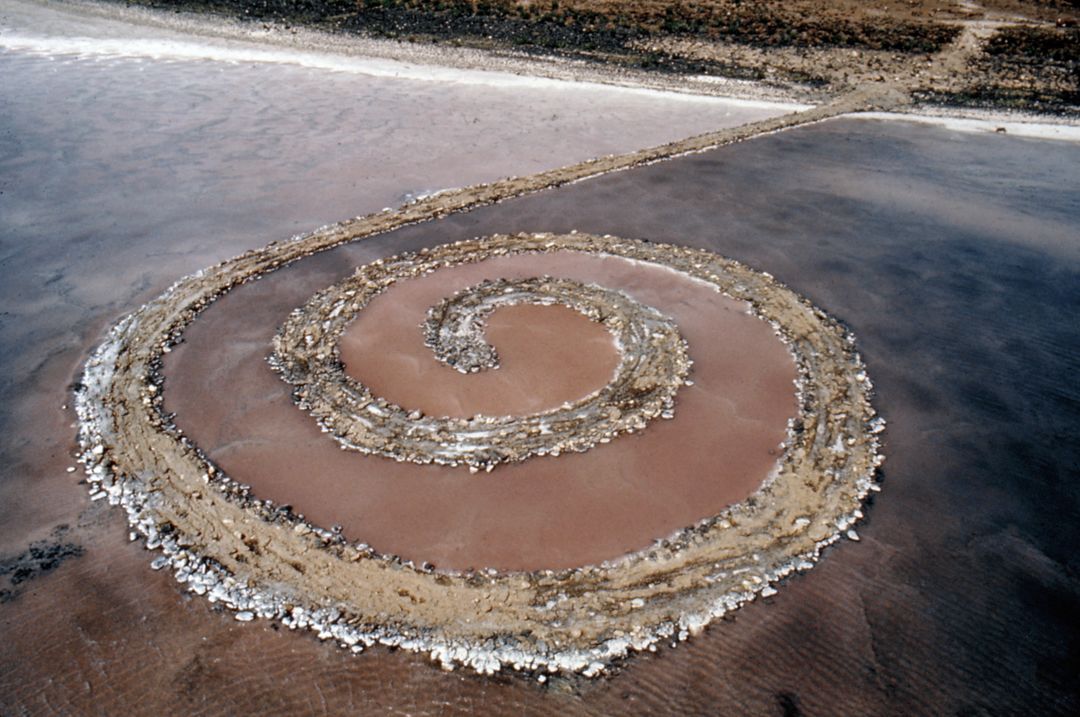
Robert Smithson (American, 1938–1973) Spiral Jetty, 1970, Great Salt Lake, Utah Mud, salt crystals, rocks, water
Back in the summer of 1968, three young, ambitious artists went looking for inspiration in the American West. For Nancy Holt, the road trip with her husband, Robert Smithson (known to her as Bob), and their friend Michael Heizer was so mind-boggling that she was unable to sleep for days. Holt and Smithson hailed from Massachusetts and New Jersey, respectively, and the sheer vastness of the terrain they found themselves exploring during their Western tour would leave an indelible mark on their lives.
Within a decade, Holt and Smithson would create artworks that would eventually become icons of a new genre known as land art, which redefined art outside of traditional galleries and institutions by focusing on site-specificity and incorporating elements of the landscape where they are placed. The most famous land art pieces, Smithson’s Spiral Jetty and Holt’s Sun Tunnels, are located within driving distance of Park City. Each offers its own, awe-inspiring experience that has made Utah an unexpected mecca for contemporary art lovers.
Spiral Jetty
Jutting out into the red-tinted water of the northeastern shore of the Great Salt Lake, Spiral Jetty comprises 6,000 tons of black basalt, earth, and salt crystals. Located at isolated Rozel Point, about 16 miles west of Golden Spike National Historic Site, the sculpture extends into a counterclockwise coil from the shore, reaching 1,500 feet in length. Encountering Spiral Jetty—viewing it from various angles, walking on and around it, often with saltwater sloshing around your feet—is a lesson in scale. As sculpture, it is huge, yet it is dwarfed by the surrounding land and inland sea.
Smithson chose Spiral Jetty’s location for its red water, salt-crystal deposits with their characteristic spiral molecular structure, and the stark landscape. These elements help convey the artist’s fascination with entropy—a constant state of transformation, decay, and renewal in nature and culture that Smithson frequently examined in his writings and art. The lake’s fluctuating levels seem to be a natural illustration of entropy; Spiral Jetty was completely submerged in 1972 and stayed under water for 30 years before droughts caused the lake to recede. The sculpture re-emerged in 2002 and has been visible ever since, though water levels are always in flux, making the appearance and experience of the work different every time.
“Spiral Jetty is the most iconic, the most essential earthwork or land art piece in existence, period,” explains Whitney Tassie, senior curator and curator of modern and contemporary art at Salt Lake City’s Utah Museum of Fine Arts. She travels to Spiral Jetty several times a year with tour groups, donors, and visiting artists looking to check the site off their art bucket lists. The UMFA works in partnership with the Dia Art Foundation, the New York–based steward of Spiral Jetty, and Great Salt Lake Institute at Westminster College to preserve, maintain, and advocate for Smithson’s masterpiece. Each of these organizations offers programs and advice for taking the trek to see Spiral Jetty. The Utah State Legislature has also demonstrated its appreciation of Spiral Jetty, recognizing it as an official state work of art in 2017.
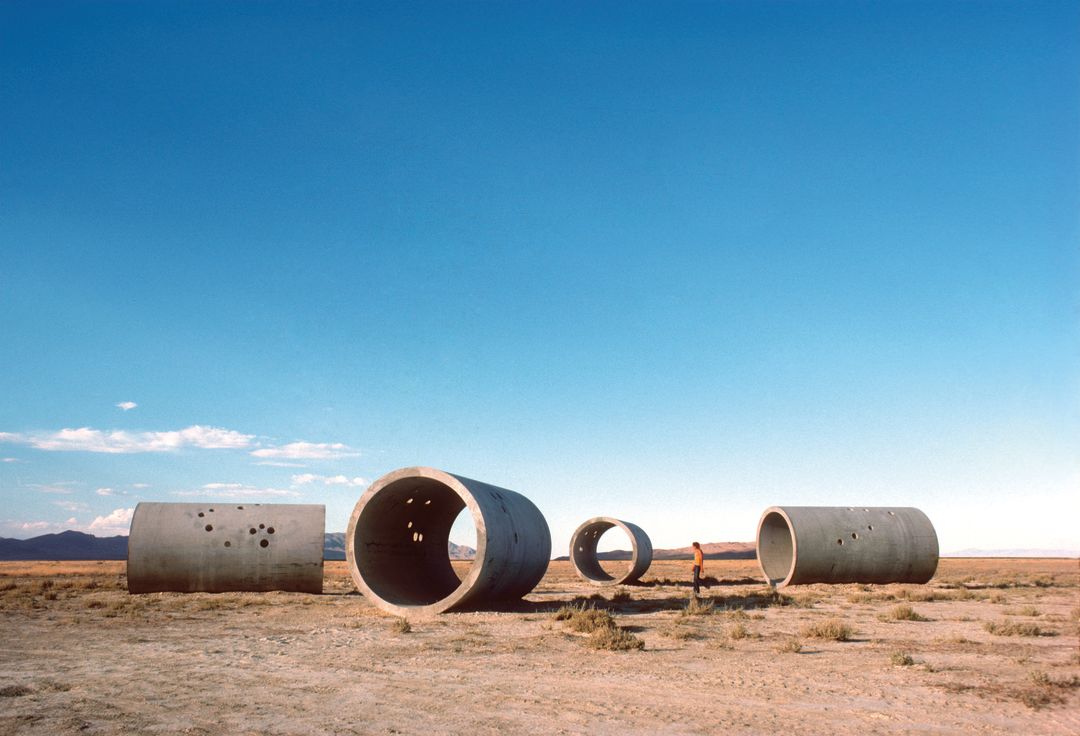
Nancy Holt (American, 1938–2014), Sun Tunnels, 1973–76, Great Basin Desert, Utah Concrete, steel, earth
Sun Tunnels
In the Great Basin Desert, west of Bonneville Salt Flats, there lies a peaceful valley. This is the remote setting for Sun Tunnels, Holt’s massive sculpture consisting of four concrete tubes laid out in an open X shape. The tunnels are set on 40 acres of empty land the artist bought to preserve the integrity of the site. Each of the tunnels weighs 22 tons and is 18 feet long by 9 feet in diameter, making them large enough to walk around and through. Holt drilled holes to mimic constellations in each tunnel—specifically Draco, Perseus, Columba, and Capricorn—causing light to scatter through the tubes and offering unique views of the surrounding landscape. During the solstices, you will likely encounter groups visiting Sun Tunnels, waiting to see the tunnels frame the sun as it passes the horizon at sunrise and sunset.
“For Nancy,” Tassie says, “this was about placing the human perspective within the landscape. How do we situate ourselves there? The tunnels are basically viewing devices. If you stand out in the desert, it’s very overwhelming; you don’t know where to look, what the focus is. It’s just expansive vastness. And with Sun Tunnels, Holt is saying, ‘Here, just look here.’”
Tassie takes visitors to Sun Tunnels twice per year. She is quick to emphasize that the trip is longer and more involved than the trek to Spiral Jetty and encourages an abundance of caution. The UMFA also periodically hosts open-invitation community gatherings at the tunnels.
It’s a romantic notion to consider these two monumental masterpieces permanently fixed in the quiet expanses of the Great Basin. They are close enough to feel connected, yet each stands alone as the ultimate expression of its creator. Sadly, Nancy and Bob’s story together would come to an abrupt end. Smithson was killed in a plane crash in 1973, while surveying sites for his final work, Amarillo Ramp. He was only 35, but his work is held in the collections of numerous museums, and his visionary legacy reverberates throughout the contemporary art world today. As for Holt, she worked with friend and famed sculptor Richard Serra to complete Smithson’s Amarillo Ramp and then went on to complete the Sun Tunnels in 1976. Holt continued to work as an acclaimed sculptor, conceptual artist, photographer, and filmmaker until her death in 2014 at the age of 75.
Getting There
To get to Spiral Jetty (130 miles from Park City), take Interstate 15 north from Salt Lake City to exit 365. Turn right onto Route 13, toward Corinne. Continue west for 18 miles (Route 13 becomes Highway 83). Take a left onto Golden Spike Drive, and drive for 7.7 miles to the Golden Spike National Historic Site Visitor Center. From the Visitor Center, drive 5.6 miles west on the main gravel road (N Golden Spike Loop). At the fork, continue left (west). Signs will direct you toward Spiral Jetty. For more info, visit the UMFA website, the Great Salt Lake Institute, or Dia Art Foundation.
To reach Sun Tunnels (236 miles from Park City), take Interstate 80 west to exit 378 at Montello, Nevada. Take Highway 233 east, which becomes Highway 30 as you re-enter Utah. About 10 miles past the state line, there are two gravel roads by a sign for Lucin. Take the first road for five miles to Lucin, which is a ghost town with no remaining buildings. Cross the railroad tracks and continue for two miles. Turn left, drive two miles, then turn right for .75 miles to Sun Tunnels. For more information, visit the UMFA website.

